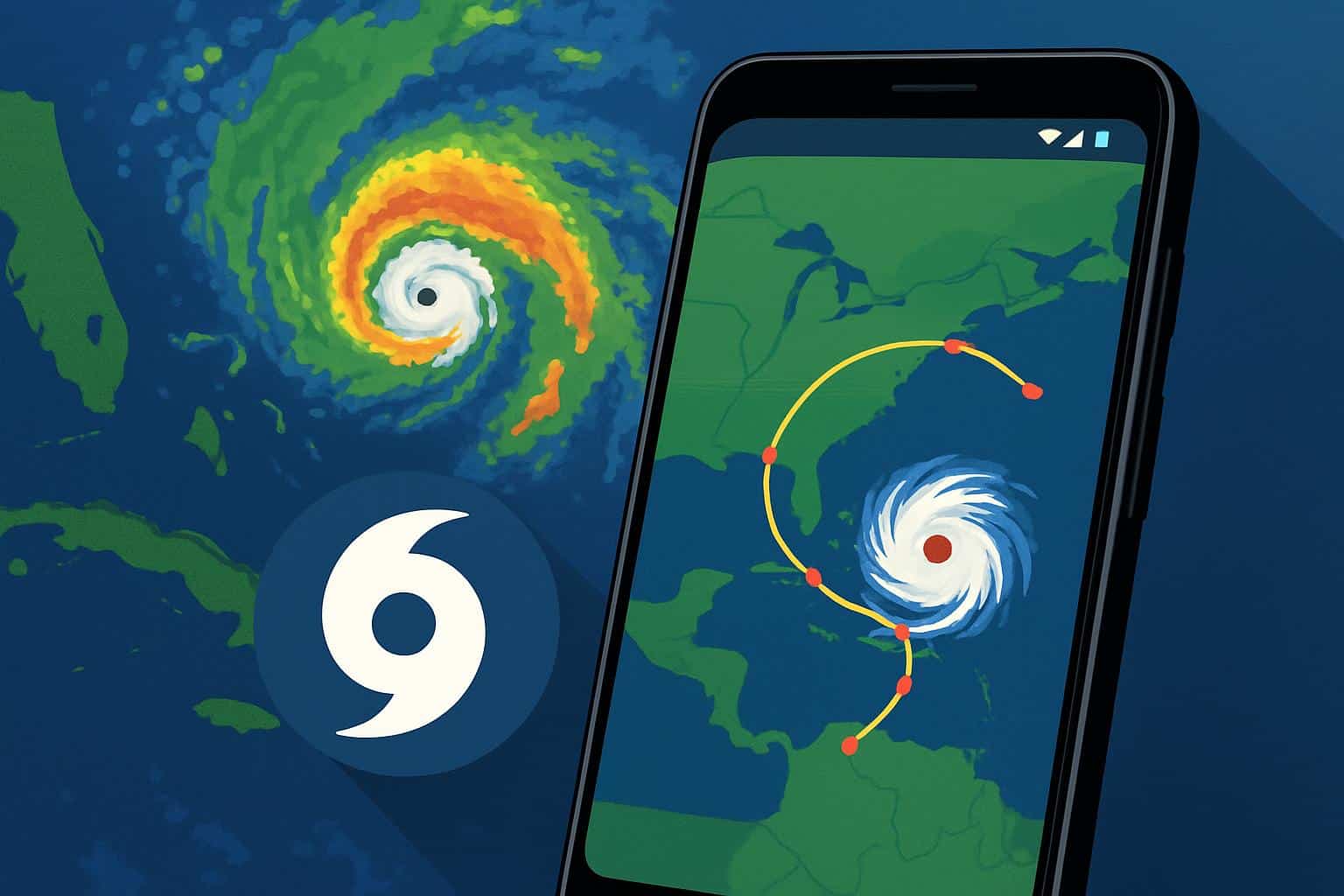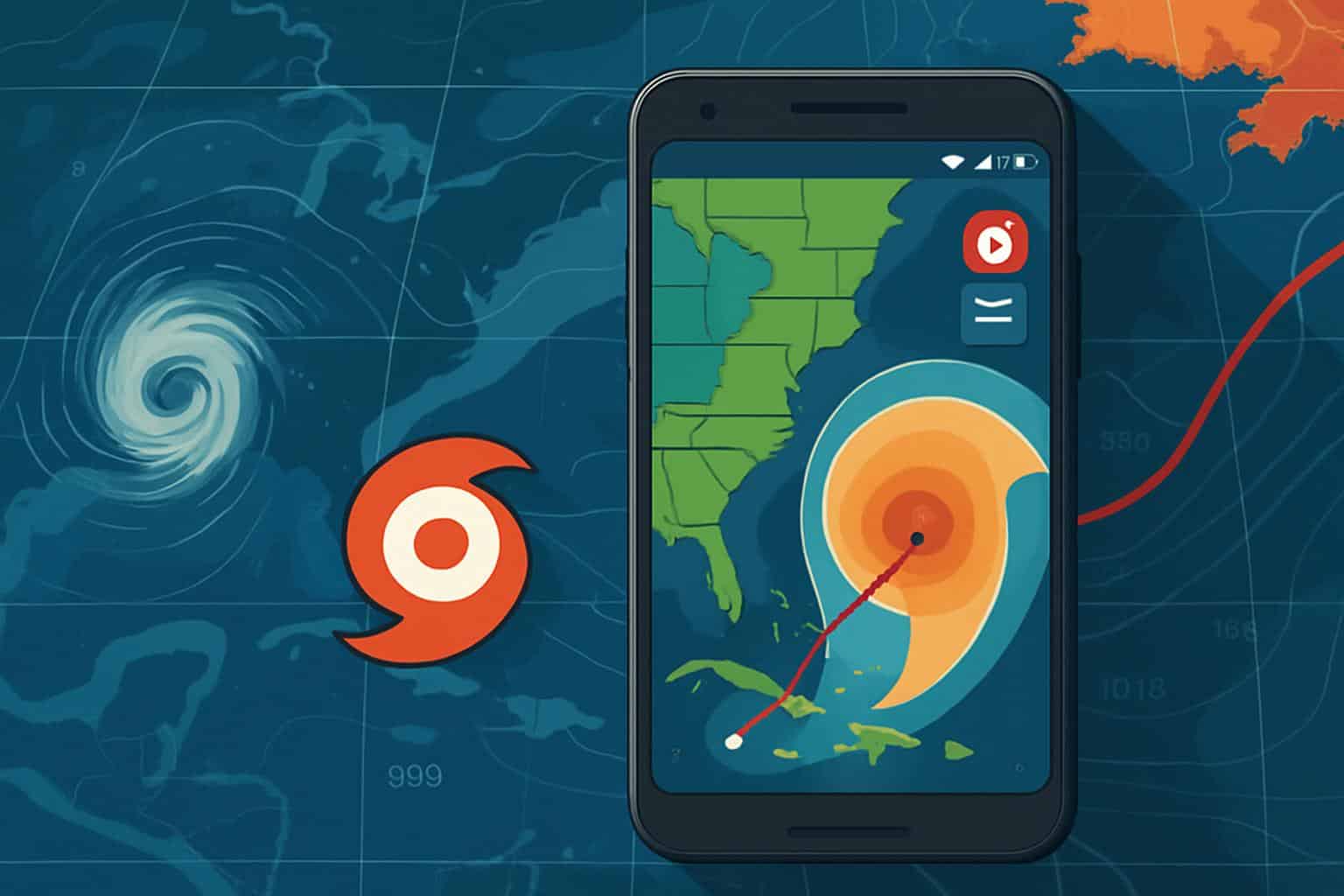If you happen to reside anywhere near the Gulf, Atlantic, or Pacific coasts, one of those generic ol’ forecast apps won’t do when the tropics are stirring.
You need something to respond as quickly, credibly, and targetedly for a tropical disturbance as it does the high-stakes creature that it is. On Android, the app that reliably provides it is Tropical Hurricane Tracker, a free, information-heavy resource centered on official advisories and maps that count when time counts.

Why a Dedicated Hurricane App Really Helps
They are infrequent at any given place, but they aren’t rare if you consider an entire basin. NOAA’s contemporary climatology sets a normal Atlantic season at around 14 named storms, seven hurricanes, and three majors. That background noise obscures a harsher truth: the number of rapid intensification events has increased in recent decades, and the window to act can contract from days to hours. A tropical app devotes home screen real estate to advisories, track updates, and hazard context rather than pollen counts and hourly drizzle.
Most important, many official agencies do not offer full-blown Android apps. The guidance that the National Hurricane Center and Central Pacific Hurricane Center put out is excellent, but it’s written for the web. A proper mobile portal would bring much of this information together, keep it current, and push it to my lock screen.
The Pick: Tropical Hurricane Tracker for Android
Tropical Hurricane Tracker (often abbreviated THT) is a free, ad-supported app that compiles near real-time tropical information for the Atlantic, Eastern and Central Pacific, and more.
The information is obtained from trustworthy sources, principally the National Hurricane Center, Central Pacific Hurricane Center, and Joint Typhoon Warning Center, but supplemented by sites that are World Meteorological Organization (WMO) regional provider members. That means it’s not “model hype” you get from me; it’s the same backbone data pros use.
The interface tends toward substance over flash. Open the app and you arrive at a basin dashboard displaying current systems tacked in place on a map, the most recent public advisories, and the official outlook. It’s designed for both the seasoned weather watcher and someone who has never used a radar app, so that each can get to what they need in seconds.
Stay Ahead With the Features You Need Most
Per-storm pages offer the basics: category on the Saffir–Simpson scale, position, maximum sustained winds, forward motion and direction, and minimum central pressure. Tap through and you’ll find the 5-day track cone, key message graphics, forecast discussions, and commonly referenced model guidance to help decipher potential paths and timing.
The “Active Storms” view of the world shows every tracked cyclone with track histories and uncertainty cones. You can pan between basins — Atlantic, Pacific, Indian Ocean, and Southern Hemisphere — and then drill down into a system for more context or satellite overlays. It’s a neat way to check whether a disturbance in the Caribbean could grow into the storm that suddenly plays out on your local news.

Notifications are the spot where THT deserves a place on your home screen. You can subscribe by basin or storm, and you’ll be pinged whenever there is a new advisory issued or if a watch or warning is released for your area. Updates can encompass full-text advisories and track graphics, decreasing the time between when it’s official to act and when you know about a storm.
For you technically minded folks, THT ingests observation layers (e.g., buoy and ship reports) provided by the National Data Buoy Center. Cross-checking weather station data near a forecast track can confirm wind shifts, pressure falls, and sea state changes in real time – an important overlay when a system is intensifying close to the shore.
Data You Can Trust, With Clear and Practical Advice
The app tethers users to official messaging. Forecast discussions explain the “why” of intensity and track shifts, while soundbites distill impacts free of jargon. THT also operates plain-language primers on tropical cyclone class, the Saffir–Simpson wind scale, and preparedness playbooks. That last part is important: category is a wind metric, not a storm surge or rainfall index, and the NHC’s guidance repeatedly emphasizes that it’s water hazards that cause most fatalities.
This mix of authoritative content and actionable context reflects the work of NOAA, WMO, and emergency managers. When storms rapidly intensify near land — as they’ve tended to do so often in the eastern Pacific and Caribbean — the lead time between a model bait headline and an official update pinged to your phone can be counted out in hours of getting ready.
How Do You Use It Day to Day for Better Awareness?
THT is not a substitute for your daily forecast, and it doesn’t pretend to be. Combine it with a general weather app and one for tracking the weather hourly (rain, UV, actual temperatures). Then, let THT handle the moments that matter: a tropical outlook suggesting a system may have developed, an overnight advisory upgrading a storm near the Gulf, or when a shift in the cone moves tropical-storm-force winds into your county.
A practical configuration is modest: turn on notifications for your home basin, star any storm that might bother your area, skim the key message after every advisory, and consult the preparedness guides for supplies and evacuation plans. Boat and coastal observers can supplement the report with buoy observations for a better indication of conditions along their route.
The Bottom Line on This Android Hurricane App
For tropical time, Tropical Hurricane Tracker is the Android app that most deftly balances speed, clarity, and credibility. It also includes the authoritative guidance fed from hurricane centers all over the globe, the smarty-pants alerts to keep an eye on, and map views while keeping you focused on what saves time and limits exposure to risk. Keep that everyday weather app — but for hurricanes and tropical storms, this is the one you want on your home screen.

